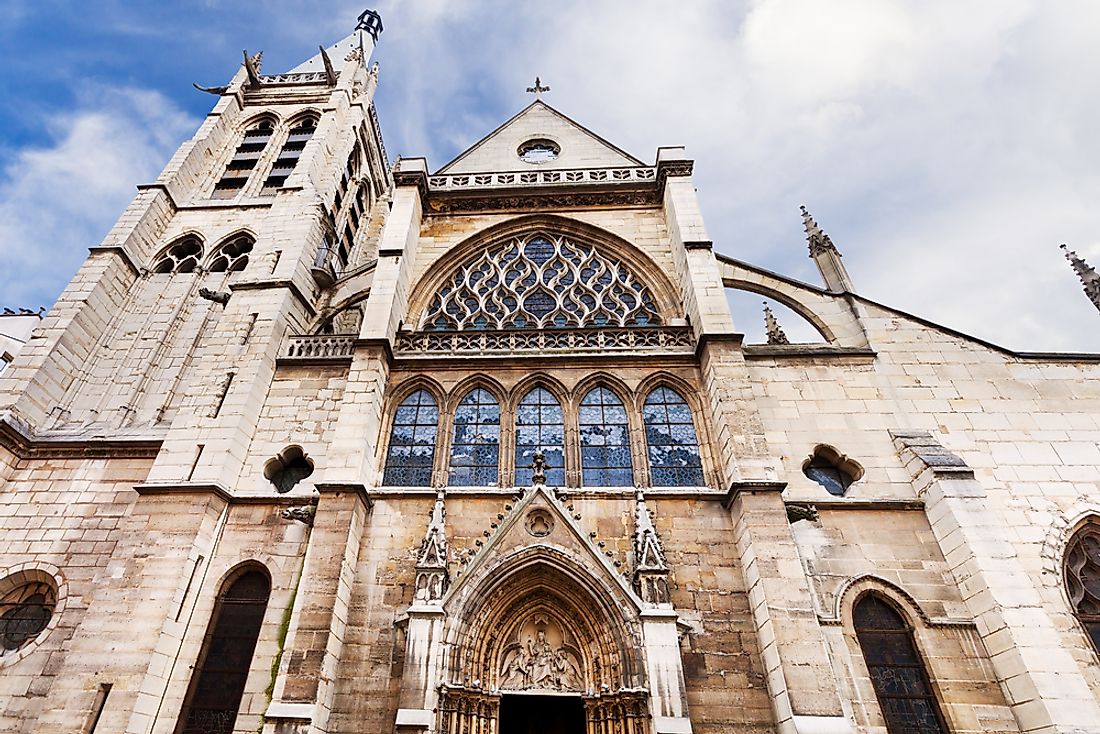Architectural Buildings of the World: The Church of Saint-Séverin

The church of Saint-Séverin is an ancient Gothic style Roman Catholic Church located in the Latin Square along the Rue Saint-Séverin of France. The church is one of the oldest in the country dating back to the eleventh century. The church of Saint-Séverin is built above the burial ground of a fifth-century hermit, Séverin of Paris, after whom it was named. The presence of an 18th-century organ within the church places it as one of the important places for sacred music, both in the old and present.
History
The church of Saint-Séverin was first constructed in the 11th century as a small church and was later expanded in the 13th century due to the expanding community of the left bank. The construction of the church mainly embraced Gothic architecture. Expansion of the original church continued up to the 14th century during which the church was destroyed by fire. After the destruction of the church by the fire, Guillaume d’Estouteville, an archpriest, undertook the restoration of the church. The newly built church embraced late Gothic architecture. The new church included more space for the construction of a northern aisle and chapels towards the southeast because of the ever-growing congregation in the neighboring community. Recent renovations and improvements to the church included the inclusion of seven windows designed by Jean Rene Bazaine in 1970.
Features
The church of Saint-Séverin is one of the most beautiful and unique buildings in France. The church is fitted and designed with unique creations such as arch buttresses, the bell tower, and marmosets to disguise the junctions between reused pillars, and the Last Judgement fresco. The interior of the church depicts a blend of flamboyant gothic architecture and modern decorative art. The interior of the church is fitted with ancient stained windows, and seven modern windows reflecting the seven sacraments in the Catholic Church. Within the church, there is a cemetery where remains of people such as Nicolas de Beaumont, a parishioner in the church was buried. Within the church, the epitaph of Catherine de Brinon and Catherine de Canteleu who played a vital role in the reconstruction of the church from the late 15th century can be found.
Attractions
Owing to the importance attached to the church and its significance in the religious history of France, the church attracts a large number of tourists. Some of the top tourist attractions include the palm tree-shaped pillars in the deambulatory, a Jean Ferrand organ from the 18th century, the ancient stained windows, a copy of a painting of Our Lady of Ostrabrama, and a painting of Claude Vignon showing the apostle Paul meditating. The church also hosts one of the oldest bells in Paris, which dates back to the early 15th century.
Symbolism
The church of Saint-Séverin has a religious significance among the adherents both in the ancient and modern times. Besides being a worship center and a commemoration of Séverin the Hermit, the church represents the Catholic faith. The religious aspects of the Catholic Church and some of their fundamental beliefs are depicted in the construction of the church. For example, the newly installed modern glass windows are inspired by the seven sacraments, a sculpture of St. Martin of Tours which symbolizes the protector of tours to whom people depended on for their success in voyages.







